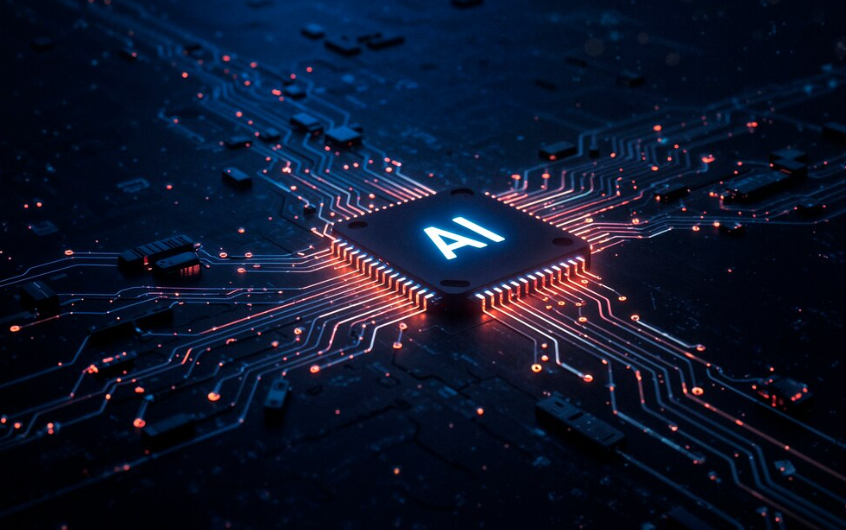
Transforming data into foresight—how AI is helping businesses make smarter, faster decisions.
In today’s data-driven world, guessing is no longer good enough. Businesses that thrive are those that anticipate trends, spot risks early, and make proactive moves—and AI-powered predictive analytics is the key to doing just that.
Thanks to the rise of advanced AI software development, companies can now unlock hidden insights from their data and forecast future outcomes with remarkable accuracy. From marketing and finance to healthcare and logistics, predictive analytics is transforming the decision-making landscape across industries.
What Is Predictive Analytics?
Predictive analytics uses historical data, machine learning models, and statistical algorithms to forecast future events. When powered by AI, it becomes faster, smarter, and significantly more accurate—enabling real-time, automated predictions.
RevAI AI-powered solutions can help enhance this process by delivering precise, scalable, and efficient predictive analytics.
In short, predictive analytics helps businesses answer critical questions like:
- Which customers are most likely to churn?
- How much inventory will we need next month?
- What’s the risk of late payments?
- When is the ideal time to launch a campaign?
Why AI Is a Game-Changer in Predictive Analytics
Speed & Scale
AI processes massive volumes of data in seconds—something traditional tools can’t handle efficiently.
Accuracy
Machine learning algorithms continuously improve their predictions by learning from new data and feedback.
Automation
AI doesn’t just predict outcomes—it can also trigger automated actions based on predictions (e.g., alert sales teams, reorder stock, send targeted offers).
Real-Time Insights
With AI, decision-makers can act on live data, not just historical reports.
Industries Leveraging Predictive AI Software
Marketing & Sales
AI predicts which leads are most likely to convert, helping teams focus efforts and increase ROI. Tools like Salesforce Einstein and HubSpot AI help optimize campaigns, recommend actions, and personalize messaging.
Finance
Banks and fintech companies use predictive analytics to detect fraud, assess credit risk, and optimize investment strategies.
Supply Chain
AI forecasts demand, predicts stockouts, and improves logistics efficiency—leading to better inventory planning and cost reduction.
Healthcare
Hospitals use AI models to predict patient readmissions, disease progression, and resource allocation.
HR & Operations
Predictive AI helps HR teams reduce employee turnover by analyzing engagement data, and assists operations in forecasting productivity bottlenecks.
Popular AI Software for Predictive Analytics
- DataRobot – End-to-end platform for building, deploying, and maintaining AI models without deep coding.
- Azure Machine Learning – Microsoft’s enterprise-grade platform for predictive modeling and MLOps.
- Google Vertex AI – Enables developers to build and scale ML models using Google Cloud infrastructure.
- SAP Predictive Analytics – Built into SAP’s suite for enterprise forecasting and risk modeling.
- RapidMiner – Visual, no-code platform for data science and predictive workflows.
Custom AI Solutions
While off-the-shelf tools offer quick wins, many businesses require tailored solutions for niche data, unique workflows, or deeper integrations. This is where custom AI software becomes essential. Partnering with experienced AI developers allows businesses to create predictive models designed specifically for their goals and industry challenges.
Final Thoughts
Predictive analytics powered by AI isn’t just a trend—it’s becoming a strategic advantage. Companies that harness it can make decisions not based on instinct, but on intelligent foresight.
Whether you’re forecasting customer behavior, anticipating market shifts, or optimizing internal operations, AI software for predictive analytics can help you stay one step ahead of the competition.
FAQS
1. What is AI software for predictive analytics?
AI software for predictive analytics uses artificial intelligence and machine learning algorithms to analyze historical data, identify patterns, and forecast future outcomes or trends to support better decision-making.
2. How does predictive analytics improve decision-making?
By providing data-driven insights and forecasts, predictive analytics helps businesses anticipate risks, optimize operations, personalize customer experiences, and make more informed strategic decisions.
3. What industries benefit the most from AI-powered predictive analytics?
Virtually every industry can benefit, but it’s especially impactful in finance, healthcare, retail, manufacturing, logistics, marketing, and insurance.
4. What types of data does predictive analytics use?
It uses structured and unstructured data, including historical records, customer data, transaction logs, sensor data, social media, and more.
5. Do I need a data science team to use predictive analytics software?
Not necessarily. Many modern AI tools offer no-code or low-code interfaces, automated model building, and user-friendly dashboards, making them accessible to non-technical users.
6. Is predictive analytics software secure and compliant with data regulations?
Reputable AI software providers implement strong data security protocols and comply with data privacy regulations like GDPR, HIPAA, and CCPA.
7. How accurate are predictive models?
Accuracy depends on data quality, the algorithm used, and the problem context. With clean data and proper training, many AI models achieve high accuracy, but regular validation and updates are essential.
8. Can AI predictive analytics be integrated with existing business systems?
Yes. Most solutions offer APIs, plug-ins, or connectors to integrate with CRMs, ERPs, cloud platforms, and data warehouses for seamless workflow.
9. How long does it take to see results from predictive analytics?
Depending on the complexity of the use case, some businesses see value within weeks, especially with pre-built models and fast data onboarding.
10. What are common use cases for predictive analytics?
Popular applications include demand forecasting, fraud detection, customer churn prediction, sales forecasting, equipment failure prediction, and targeted marketing.







